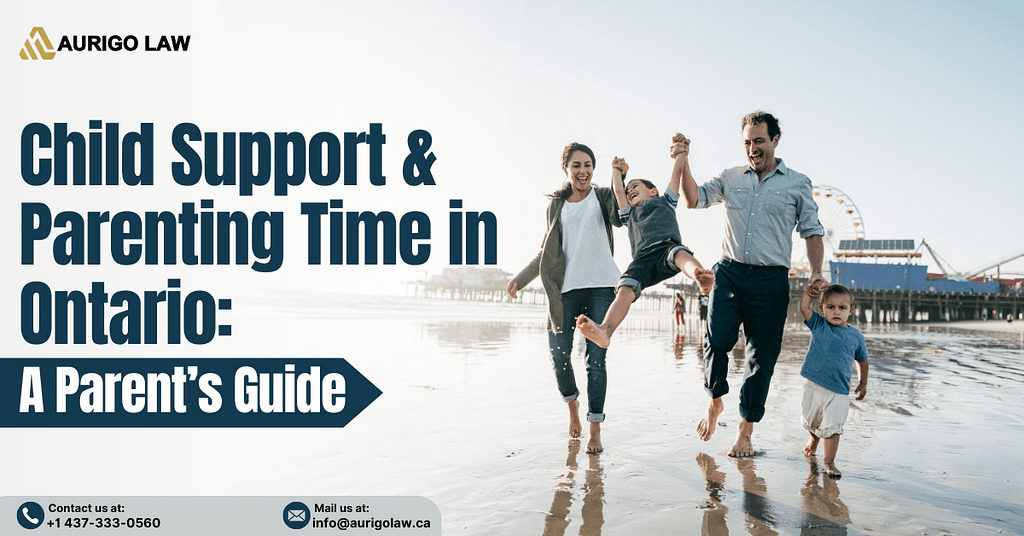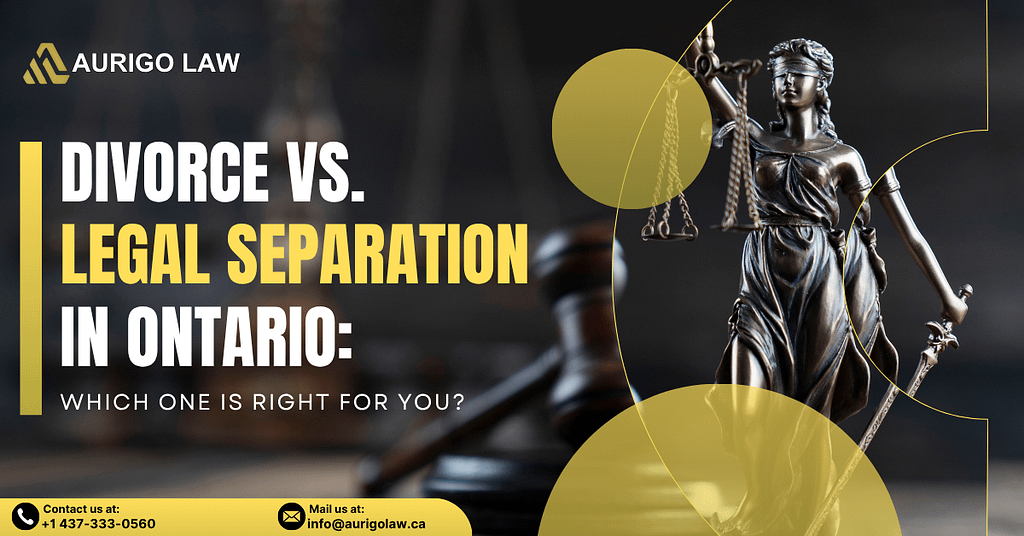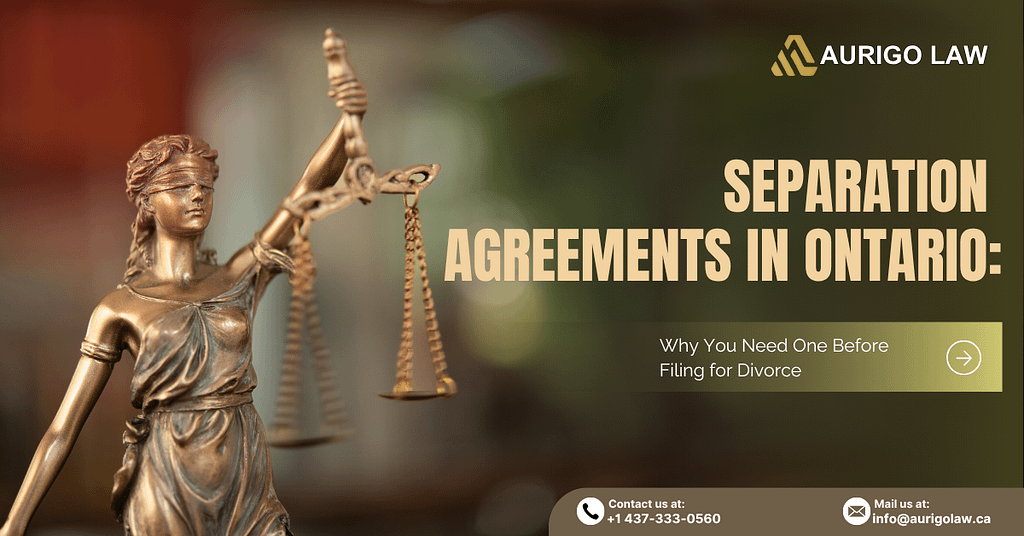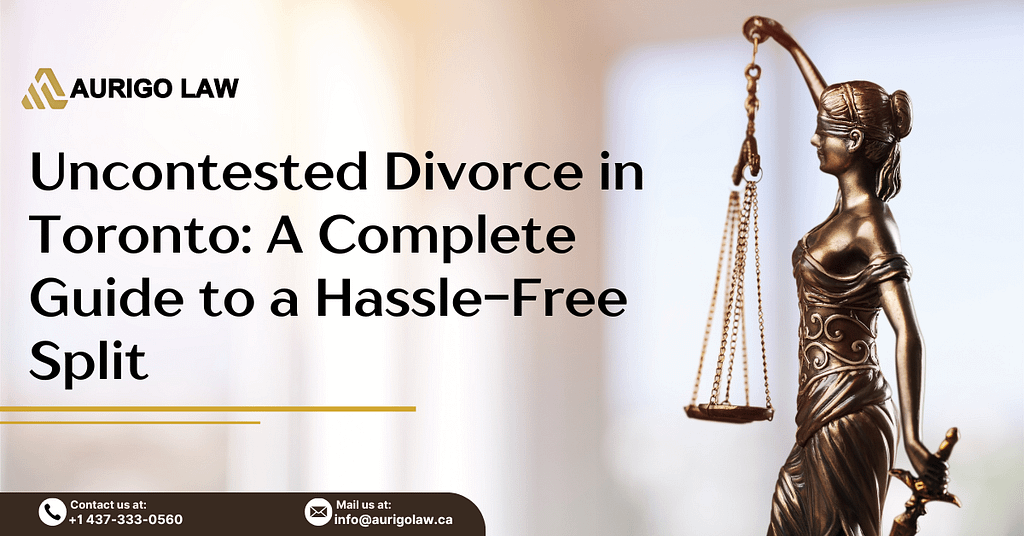Child Support & Parenting Time in Ontario: A Parent’s Guide
Child Support & Parenting Time in Ontario: A Parent’s Guide When parents separate or divorce in Ontario, two of the most sensitive and emotionally charged issues are child support and parenting time. Both are deeply interconnected, and understanding how they work can make all the difference in creating a stable, healthyenvironment for your children.At Aurigo Law, we’ve helped hundreds of families navigate the complexities of separation and child-related legal matters. With extensive experience in Ontario family law, Arshi Chandel and her legal team prioritize clarity, fairness, and compassion when guiding clients through support and custody arrangements.Whether you’re paying or receiving child support, this guide will help you understand your rights and responsibilities under Ontario law. In this post, Arshi Chandel, a seasoned divorce lawyer in Toronto, breaks down the divorce lawyer costs in Ontario, what services are included, and how to minimize your expenses without compromising on quality legal support. What is Child Support & How is It Calculated in Ontario? Child support is a legal obligation where one parent provides financial support to help cover achild’s day-to-day living expenses after separation or divorce. It is not optional and is governedby Ontario’s Family Law Act and the Federal Child Support Guidelines. Key Purposes of Child Support: Ensures children enjoy the same standard of living they would have if parents remained together Helps cover essentials such as food, clothing, housing, and education Reinforces the principle that both parents remain financially responsible How is it calculated? In Ontario, child support is based primarily on:1. The income of the paying parent2. The number of children3. The province where the paying parent lives The Federal Child Support Guidelines provide a standardized table that determines monthly amounts. For example: A parent in Ontario earning $50,000/year would pay around: $461/month for 1 child $751/month for 2 children You can use the Department of Justice’s online Child Support Calculator to get a rough estimate, but a lawyer can help ensure accuracy based on your unique situation. How Parenting Time Affects Child Support Payments? Many parents are surprised to learn that parenting time (formerly called custody/access)directly affects the amount of child support. Three common parenting arrangements in Ontario:1. Primary Parenting Time One parent has the child for over 60% of the time The other parent pays full table support 2. Shared Parenting Time Each parent has the child at least 40% of the time Support may be adjusted based on a set-off approach, comparing both incomes 3. Split Parenting Time Each parent has at least one child living with them primarily Child support is calculated separately for each child and offset accordingly “Parenting time isn’t about who pays more—it’s about maintaining financial stability for the child,” says Arshi Chandel. Modifying Child Support Orders: When and How? Child support is not set in stone. You can change or modify child support if your circumstances change significantly. Valid reasons to request a modification: Change in income (job loss, promotion, new business) Change in parenting time Child turns 18 or becomes financially independent New special or extraordinary expenses arise (Section 7 expenses) How to request a change: 1. Try to reach an agreement with the other parent 2. Use Ontario’s online Child Support Service if eligible 3. File a motion to change in the family court It’s highly recommended to have a lawyer review the new figures to ensure they align with current guidelines and are legally enforceable. Common Myths About Child Support and Custody in Canada There’s no shortage of misinformation when it comes to child support in Ontario. Let’s clear up a few: Myth #1: If I don’t see my child, I don’t have to pay support Wrong. Parenting time and financial obligation are separate legal matters. Even if a parent is denied access, they are still required to pay support. Myth #2: Child support is only needed until age 18 Not always. Support can continue past 18 if the child is in full-time school, has a disability, or is still dependent. Myth #3: We agreed informally, so we don’t need a court order Informal agreements may not be enforceable. It’s crucial to have support terms written into a separation agreement or court order. Myth #4: I don’t need to pay support if we share custody 50/50 Even with 50/50 parenting time, child support still applies if one parent earns more than the other. What Happens if a Parent Refuses to Pay Child Support? Refusing to pay child support can have serious legal consequences. In Ontario, support orders are enforced by the Family Responsibility Office (FRO).FRO can take the following actions: Garnish wages or bank accounts Suspend driver’s licenses and passports Seize tax refunds or lottery winnings Register liens against property If a parent falls behind, they may also be ordered to pay arrears, with interest. According to Ontario’s Ministry of Community and Social Services, over 90% of child support cases registered with the FRO involve enforcement action. A proactive legal strategy is always the best approach. Real-World Example: Co-Parenting with Financial Fairness Kavita and Michael, both from Mississauga, agreed on joint parenting time for their two sons. Michael earned significantly more and initially assumed they wouldn’t need formal support arrangements.However, their informal plan led to constant disagreements about extracurricular costs and school fees. They turned to Aurigo Law, where Arshi Chandel helped draft a separation agreement that included: Standard child support based on Michael’s income Section 7 contributions for sports, tutoring, and school trips A schedule for reimbursements and shared payments This agreement restored stability and set clear financial expectations—benefiting the children above all. FAQs How is child support calculated in Ontario? Support is based on the Federal Child Support Guidelines, considering the paying parent’s income and number of children. Adjustments are made for shared parenting or Section 7 expenses. What if my ex-spouse refuses to pay child support? You can register the court order or agreement with the Family Responsibility Office, which has the authority to enforce payment through wage garnishment and other means. Can child
Child Support & Parenting Time in Ontario: A Parent’s Guide Read More »





